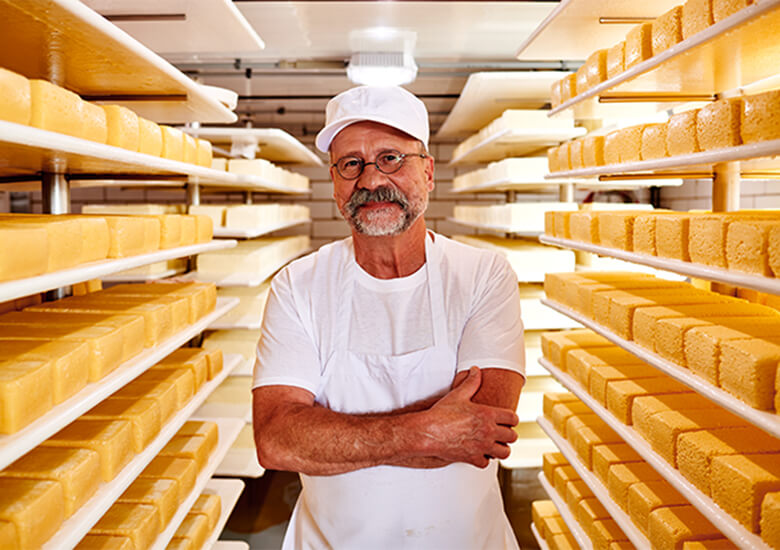A Preference of Authenticity: Floridia Cheese Melbourne and Its Craftsmanship
Unlocking the Tricks of Artisanal Cheese Making: A Detailed DIY Overview
In the realm of culinary workmanship, artisanal cheese making stands as a testimony to the delicate balance in between practice and development. Each action in the procedure, from selecting the appropriate milk to perfecting aging methods, holds within it a wide range of knowledge passed down with generations. As we start this journey to demystify the art of developing exquisite cheeses, we are confronted with a tapestry of keys and skills waiting to be deciphered. Join us as we check out the details of this old craft, where art, science, and patience assemble to create flavors that tantalize the senses.
Selecting the Right Milk
When beginning on the journey of artisanal cheese making, the choice of milk plays a vital function in figuring out the top quality and qualities of the last product. The kind of milk selected affects the taste, texture, and on the whole account of the cheese. Raw milk, directly from the pet, is preferred by lots of artisanal cheesemakers as a result of its one-of-a-kind blend of enzymes, germs, and taste compounds. Making use of raw milk comes with dangers and policies, making pasteurized milk a more secure option for beginners.
Furthermore, the source of the milk, whether from cows, goats, lamb, or buffalo, adds distinctive tastes and characteristics to the cheese. Each type of milk brings its very own nuances, permitting for a vast variety of cheese selections to be crafted based on the selected milk.
Culturing and Coagulating
To launch the cheese-making procedure, the vital actions of culturing and coagulating should be very carefully carried out to transform milk right into curds and whey. The kind of society utilized can substantially affect the flavor, structure, and ripening of the last cheese item.

The timing and temperature control during culturing and coagulation are essential aspects that influence the last result of celebrity. Appropriate execution of these actions is necessary to make sure the desired appearance, flavor, and uniformity of the artisanal cheese being created.
Draining and Pushing Curds
After the milk proteins have actually coagulated and the curds have been reduced to launch whey, the next critical step in artisanal cheese making entails draining pipes and pressing the curds to attain the preferred structure and uniformity of the final cheese item. Draining pipes is the process of dividing the curds look these up from the whey. This can be done by transferring the curds right into a cheesecloth-lined colander or mold and mildew and allowing the whey to drain off naturally. The time for draining pipes can vary depending on the kind of cheese being made and the wanted moisture material.
Pushing aids eliminate any staying whey and compacts the curds to develop a solid cheese wheel. Appropriate draining and pressing are critical actions that significantly impact the high quality and qualities of the artisanal cheese being created.
Aging and Flavoring Strategies
Applying meticulous aging and flavoring strategies is critical in enhancing the depth and complexity of artisanal cheeses, boosting their taste accounts to beautiful degrees of refinement and class. Aging plays why not check here an essential function in creating the distinct tastes and textures that differentiate artisanal cheeses.
Seasoning techniques likewise add significantly to the final preference of artisanal cheeses. Cheesemakers might choose to introduce extra tastes by incorporating components such as natural herbs, seasonings, and even fruits into the cheese throughout the manufacturing process. Furthermore, some cheeses are cleaned or massaged with numerous liquids, such as brine or alcohol, to improve their textures and flavors.
Wrapping and Keeping Cheeses

Final Thought
In conclusion, grasping the art of artisanal cheese making includes meticulously selecting the best milk, complying with accurate culturing and coagulating processes, draining pipes and pushing curds properly, and making use of numerous aging and flavor techniques. Remember to cover and save your cheeses properly to guarantee ideal taste and structure advancement.
Each type of milk brings its own nuances, permitting for a vast range of cheese selections to be crafted based on the selected milk.After the milk proteins have coagulated and the curds have been cut to launch whey, the next crucial step in artisanal cheese making includes draining pipes and pushing Read Full Report the curds to achieve the preferred structure and consistency of the final cheese product. Most cheeses ought to be wrapped in wax paper or cheese paper to allow them to take a breath while shielding them from drying out. For cheeses that require to proceed aging, such as bloomy peels or cleaned peels, ensure they are kept in an amazing atmosphere like a cheese cave or a refrigerator established to the proper temperature level. By paying interest to the covering and storage space of artisanal cheeses, cheese makers and enthusiasts can maintain the honesty of these delicacies and fully appreciate their intricate flavors.